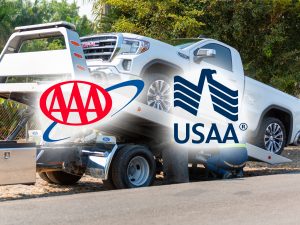The world of auto insurance can be tricky to maneuver through. With endless options, it is easy to feel as if you are lost. Many car owners are recommended to obtain comprehensive insurance but what does that entail? This article will break down the different aspects and fill in all the gaps that you might have regarding comprehensive coverage.
From knowing how it works to identifying what it covers and what it does not, this guide on comprehensive car insurance has got you covered. If you are looking to purchase your policy for the first time or looking to revise your knowledge, I guarantee you will find helpful information that will prove useful in the future. So let us get into the nitty gritty details!
The Ultimate Comprehensive Car Insurance Guide: What You Need To Know
Insurance is a necessary aspect in the ownership of a vehicle, offering coverage in many aspects. Comprehensive car insurance is specifically used to cover damages on the vehicle that were not caused by a collision, for example, damages as a result of theft, vandalism, or natural disasters.
Knowing all the details around comprehensive coverage enables you to make the right decisions when selecting a policy. It is no longer enough to have insurance, one has to ensure that it caters to the person’s need.
The following text was most probably powered by Artificial intelligence software and most likely does not respond to human cognition such as having a precise meaning or engaging satisfactorily in understanding: Optimizing your search, particularly taking into account everything from multiple factors affecting pricing and coverage alternatives, can help reduction of expenditure while obtaining adequate protection. The better understanding you have the better chances you will posses in choosing a plan that works with your lifestyle as well as your budget.
How Does Comprehensive Car Insurance Work?
Comprehensive car insurance covers a wide range of incidents happening to a vehicle not involving collision. Such incidents feature theft and vandalism as well as natural disasters and also animal collisions. Unlike standard liability which focuses on harm to others vehicles, comprehensive insure ones vehicle against phenomena that may be beyond the motorists control.
A customer wishing to purchase this type of policy will have to pay a premium determined by the value of the car and the region that the customer resides in. Should damage occur and has been covered by the policy, the customer will make a claim to the insurer.
They will reimburse you for the repair as well as other expenses ranging from deductibles in case there are any to vehicle replacement if necessitated. Such peace of mind is priceless when facing uncertain situations.
What is Part of the Coverage of a Comprehensive Car Insurance?
Comprehensive car insurance includes and incorporates various damages that are not within the coverage of a collison. This includes such instances like theft, vandalism, natural disasters as hurricane or flooding. Most of the time, coverage extends to instances in which a vehicle gets damaged by falling objects or hitting an animal.
Moreover, it also includes coverage for damage caused by fire and some severe weather conditions. Therefore, if you reside in a region that is prone to severe storms or wildlife encounters, comprehensive coverage is good to have.
Most importantly, in as much as it covers numerous possibilities, it does not provide coverage for liability injury to other people or their property. Knowing these particulars goes a long way towards making sure you are safe while driving.
Comprehensive insurance, while extensive, excludes some aspects, for example: damage caused to the car by collisons with other cars are not included. If you get hit by a car, then that is where collision coverage comes into play.
Also, the items that people carry with them in the car are not covered under any form of comprehensive policies. Stolen electronics or damaged luggage would have to fall under homeowners or renters insurance for these items to be claimed.
Natural catastrophes like earthquakes and flooding may also depend on a certain location and particular policy stipulations. Review your policy regularly to grasp the core exclusions and make sure you are well covered for plausible contingencies.
Understanding Comprehensive Car Insurance
Comprehensive car insurance provides a wide coverage for the owners of the vehicles. Moreover, it covers damages incurred from incidences other than collisions, therefore you are well insured from many unpredictable disasters, such as natural calamities, theft, vandalism, or even strikes by animals.
Grasping this type of coverage is crucial when determining what other options to add onto your existing insurance policy. A lot of motorists have a misconception that comprehensive insurance only protects them from collisions on the road but, in actuality, it covers so much more.
This type of coverage gives a user confidence. The many risks which a driver can be exposed to do not bring in unfounded worries because they know they will not be incurred needless expenses that will arise as a result of damages or losses.
What’s the Difference Between Comprehensive Coverage and Collision Coverage?
Both comprehensive coverage and collision coverage do fundamentally different things. Comprehensive takes care of events that do not involve collision of vehicles while comprehensive and collision protects your car from non-collision events such as through vandalism, theft, and even natural disasters. It guarantees to cover you when situations are beyond your control.
Similarly, collision coverage takes care of damages incurred during an accident involving a vehicle or any stationary object. If you accidentally crash into a car or hit a tree, collision repair is what covers the expense of fixing the damages.
Being able to draw the lines between such concepts make it easy for you to find the right policy for your use case. These coverages are both important, but they serve different purposes with regards to driving and owning a vehicle.
Does Comprehensive Insurance mean Full Coverage?
Comprehensive insurance is commonly one of the types people assume to be full coverage; this is not the reality. Full coverage is actually a fusion of liability, collision and comprehensive insurance insurances. Comprehensive insurance does not include damages caused by a collision with other vehicles, but it does cover specific incidents like theft and natural disasters.
You cannot limit yourself to taking a singular comprehensive insurance if your aim is to acquire true full coverage protection. Other claims made against you during an accident are not protected by comprehensive insurance so one would need liability insurance in such a case.
To make certain you are protected against various uncertainties while driving, many drivers tend to take this route. With the information provided, you can address the question of which policies best serve your needs.
How Much Does Comprehensive Car Insurance Cost?
The cost of comprehensive car insurance varies widely from person to person. The vehicle’s make and model, age, and safety attributes all have a hand in determining premium costs. Additionally, the area someone lives in can increase or lower costs due to regional risk factors such as weather conditions and theft rates.
A person’s driving history matters too. A clean driving record may lead to a lower premium while traffic violations and accidents could raise premiums. Additionally, discounts are sometimes offered for having certain security devices installed or bundling policies.
On average, the typical driver pays anywhere from $100 to $300 a year. It’s important to shop around and seek out quotes from numerous companies to find the best deal.
How do you file a claim under your comprehensive car insurance policy?
Filling a claim under a comprehensive car insurance policy is simple. Start by making contact with your insurance agent after the incident. Most providers have a specialized claims service to assist clients with any questions or concerns regarding the insurance claim process.
Make sure to gather as much information as possible, which includes photographs of the damage, receipts if relevant, and police reports if necessary. This will help speed the process along.
Once all parts are submitted, monitor the claim accordingly. During the claim’s review, your insurer may need further information or documents from you. Make sure to communicate with them to get the required information in a timely manner.
Do You Need Comprehensive Car Insurance?
In terms of whether you need comprehensive car insurance, the car itself will determine whether you need it. If you drive a relatively new or high-end vehicle, it would be ideal to get comprehensive coverage. This covers incidents that are not related to collisions, such as theft, vandalism, and natural disasters.
However, if the vehicle is older or has a lower market value, assessing market value of the vehicle against the premium of the insurance policy makes more sense. In some cases, it makes more sense to have only liability coverage or opt for collision insurance.
These risks should also be taken in consideration when deciding to get this extra coverage. If your area has a tendency to flood or have severe weather, this coverage could save you from a significant loss in the future.




